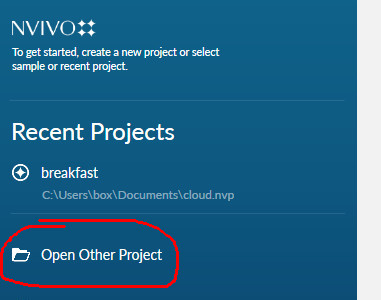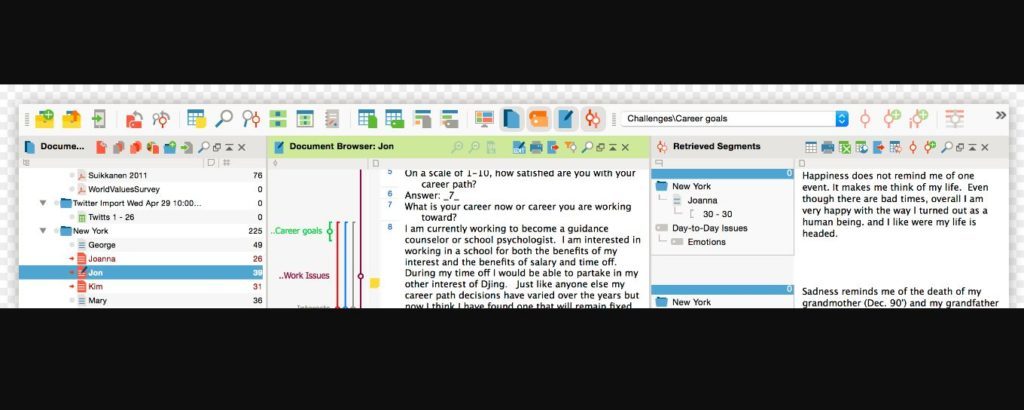
- #Maxqda vs nvivo pdf
- #Maxqda vs nvivo generator
- #Maxqda vs nvivo manual
- #Maxqda vs nvivo android
- #Maxqda vs nvivo software
Rather team members must have access to the program, work separately, and then merge files together.īefore you buy your student license make sure you have a look at this comparison in cost and features. Projects cannot be accessed simultaneously by multiple users.MAXQDA Mobile App – Extend the Possibilities for Your Research.
#Maxqda vs nvivo generator

#Maxqda vs nvivo pdf
#Maxqda vs nvivo software
Instead the software is designed for both qualitative, quantitative research and (mixed methods research). Unlike most other CAQDAS, MAXQDA was not developed on the background of Grounded Theory. It is being developed and distributed by VERBI Software based in Berlin, Germany It is the successor of winMAX, which was first made available in 1989. MAXQDA is a software program designed for computer-assisted qualitative and mixed methods data, text and multimedia analysis in academic, scientific, and business institutions.

#Maxqda vs nvivo manual
Online video tutorials and support manual are available for users who wish to view a demonstration or need assistance with understanding NVivo functions. These features work well for various size projects and with single to multiple person teams.
#Maxqda vs nvivo android
NVivo uses an interface similar to Microsoft making it user-friendly, while it is easily accessible from any mobile device including an iPhone, iPad, tablet, and Android phone using EverNote. It has been designed for qualitative researchers working with very rich text-based and/or multimedia information, where deep levels of analysis on small or large volumes of data are required. NVivo is a qualitative data analysis (QDA) computer software package produced by QSR International.


The program provides tools that let the user locate, code, and annotate findings in primary data material, to weigh and evaluate their importance, and to visualize the often complex relations between them. The purpose of ATLAS.ti is to help researchers uncover and systematically analyze complex phenomena hidden in unstructured data (text, multimedia, geospatial). So I decided to focus on these three instead. There is a clear distinction between three major software options and the rest of the available options. There is a range of available software that has developed over the years and distinctions have been made between kinds of CAQDAS (text retrievers, code and retrieve, qualitative comparative analysis, theory building).ĭuring my ersearch I noticed a pattern emerging when people are talking about the "best" software (whatever that means). Follow-up to Choosing the right Data Analysis Software from CES PHD Support Group


 0 kommentar(er)
0 kommentar(er)
